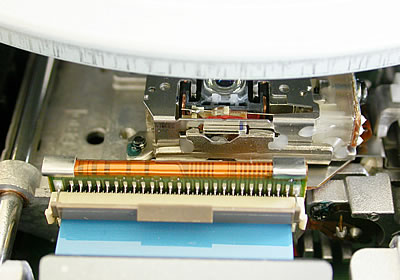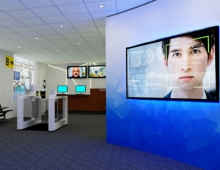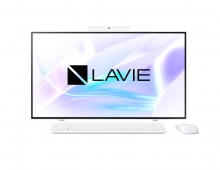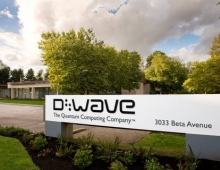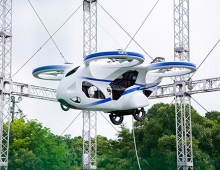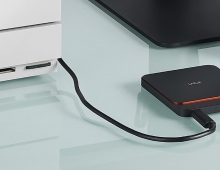LaCie d2 DL DVD±RW Recorder
1. Introduction
Review Pages
2. Transfer Rate Reading Tests
3. CD Error Correction Tests
4. DVD Error Correction Tests
5. Protected Disc Tests
6. DAE Tests
7. Protected AudioCDs
8. CD Recording Tests
9. DVD Recording Tests
10. KProbe/PlexTools Scans - Page 1
11. KProbe/PlexTools Scans - Page 2
12. DVD+R DL - Page 1
13. DVD+R DL - Page 2
14. BookType Setting / Firmware versions changes
15. Conclusion
LaCie d2 DL DVD±RW Recorder - Page 1
 LaCie
has been a manufacturer of storage peripherals for over 12 years, and
has consistently maintaine its innovative spirit over this time. Back
in 2002, LaCie launched the first d2 casing that was a success worldwide.
LaCie had taken its first steps into the retail arena.
LaCie
has been a manufacturer of storage peripherals for over 12 years, and
has consistently maintaine its innovative spirit over this time. Back
in 2002, LaCie launched the first d2 casing that was a success worldwide.
LaCie had taken its first steps into the retail arena.
 Their
latest d2 drive is a DL DVD±RW recorder, capable
of writing up to 8.5GB on double layer DVD+R9 media. The multi-format DVD
rewritable drive supports both + and - format media, and the new double layer
DVD+R9 media. This all-in-one rewritable drive also features FireWire
and Hi-Speed USB 2.0
ports for easy connection to any Mac or PC.
Their
latest d2 drive is a DL DVD±RW recorder, capable
of writing up to 8.5GB on double layer DVD+R9 media. The multi-format DVD
rewritable drive supports both + and - format media, and the new double layer
DVD+R9 media. This all-in-one rewritable drive also features FireWire
and Hi-Speed USB 2.0
ports for easy connection to any Mac or PC.
- Features
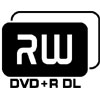 The
LaCie d2 DL DVD±RW recorder can read DVD-ROM discs at 12x max and CD-ROM
discs at 40X
max. As a CD recorder, it can record at 32X max when CD-R discs are
used, and 16X max with CD-RW discs. It can write at 8X for both -R and +R DVD
formats, and can write/rewrite at 4X, -RW and +RW discs. The recording speed
for DVD+R9 discs reaches 2.4X. Unfortunately, this drive does not support DVD-RAM
media.
The
LaCie d2 DL DVD±RW recorder can read DVD-ROM discs at 12x max and CD-ROM
discs at 40X
max. As a CD recorder, it can record at 32X max when CD-R discs are
used, and 16X max with CD-RW discs. It can write at 8X for both -R and +R DVD
formats, and can write/rewrite at 4X, -RW and +RW discs. The recording speed
for DVD+R9 discs reaches 2.4X. Unfortunately, this drive does not support DVD-RAM
media.
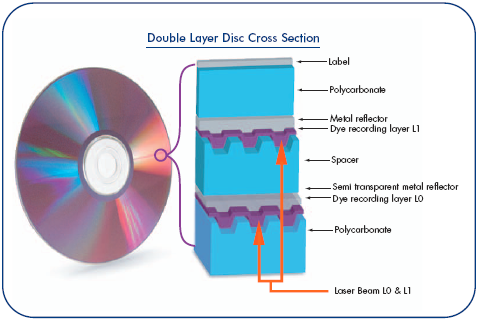
When a double layer disc is inserted into the drive, the laser will focus on one of the layers and attempt to read an ADIP (Address in Pregroove) signal. From this signal, the drive is able to detect if the disc is a double layer DVD+R disc, and which layer it is focusing on. Once the media type and layer are determined, the laser can adjust its range of focus to read/write one of the two recordable layers.
For more information about DVD+R DL technology, you can visit the DVD+RW Alliance website or Philips Research website.
![]() The LaCie
d2 DL DVD±RW recorder takes advantage of NEC's "high resolution
writing strategy" and an improved version of NEC's "Active
Optimized Power Control" (Active OPC), the "high resolution writing
strategy".
The LaCie
d2 DL DVD±RW recorder takes advantage of NEC's "high resolution
writing strategy" and an improved version of NEC's "Active
Optimized Power Control" (Active OPC), the "high resolution writing
strategy".
- Specifications
Drive: |
LaCie d2 DL DVD±RW (USB2 & FireWire) |
Item Number: |
300757 |
Capacity: |
4.7GB / 8.5GB* |
Interface: |
Hi-Speed USB 2.0 and FireWire |
Technology: |
DVD+R9 (Double Layer),DVD-R, DVD-RW, DVD+R, DVD+RW, CD-R and CD-RW |
Digital Audio Extraction: |
40x CAV |
DVD speeds (Write, Rewrite, Read): |
DVD+/-R: 8x DVD+/-RW: 4x DVD+R9 (DL): 2.4x DVD-ROM: 12x |
CD speeds (Write, Rewrite, Read): |
CD-R: 32x; CD-RW: 16x; CD-ROM: 40x |
Writing Methods: |
DVD-R: Disc-at-Once, Incremental recording, Multi-border recording DVD-RW: Restricted Overwriting DVD+R: Incremental recording DVD+RW: Random recording CD-R/RW: Disc-at-Once, Track-at-Once, Session-at-Once, Packet Writing |
Writing Compatibility: |
4.7GB DVD±R / DVD±RW, 8.54GB DVD+R9 (Double Layer), 700MB CD-R / CD-RW |
Disc Format: |
CD: CD-ROM, CD-ROM XA, CD-DA, Photo CD, CD-R, CD-RW, CD-Extra, CD-Text DVD: DVD-ROM, DVD+R, DVD-R (General Use only), DVD+RW, DVD-RW, DVD-Video |
High-speed CD-RW Compatibility: |
Yes |
Buffer: |
2 MB |
Access Time: |
CD: 130 ms DVD: 140 ms |
Dimensions (WxHxD): |
6.3x1.7x10.6 in. / 17.3x4.4x26.8 cm |
System Requirements: |
Minimum: PC: Windows 98 SE, Windows 2000,Windows Me, Windows XP Macintosh: Mac OS 9.1 and 10.1.2 or later, Power Mac G4 500 Mhz; 64MB RAM Double Layer recording: Macintosh: 10.2.3 or later / PC: Windows 2000 or XP |
Loading System: |
tray |
Box Content: |
6-to-6 pin FireWire cable & USB 2.0 cable, Power supply, DVD Utilities CD containing User's manual, 1 piece DVD-R media |
Bundled Software: |
Easy CD & DVD Creator 6.2, Easy Media Creator 7, DVDMax Player, Toast Lite 6.0** and 5.2.2 |
Comments: |
*Double Layer disc required **Including DVD video authoring (Mac OS 10.2.3 or greater) |
The drive does not support Mount Rainier and it uses the well known RPC II region control, allowing a user to change the drive's region at most 5 times. In Microsoft Windows XP, the drive is recognised as the NEC ND-2510A drive (firmware version 2.04). Below are the drive's main specs as given by NeroInfoTool, VSO Inspector and DVDInfoPro:




- Retail Package
 The
European retail package includes an installation guide, one USB 2.0 cable,
one
The
European retail package includes an installation guide, one USB 2.0 cable,
one

On the front panel, there are the CD-RW, DVD±R/RW and DVD DL logos. Under the loading tray there is the activity led, emergency eject hole, phone jack, volume level control and the eject button.

The rear side has the analogue audio output connectors (Left-Right), two firewire IEEE 1394, one USB 2.0 and the DC in. You can see that the power on/off switch is missing. The drive turns itself on or off when it detects that the computer that it is connected to is turned on or off

On the drive's label located topside, we can see that the drive is indeed the well known NEC ND-2510A.
The drive uses the same chipset as the ND-2500A and ND-2510A, namely the D63630 chipset. Clicking on the image above will reveal a high resolution image.

The following photo shows the laser lens of the LaCie d2 DL DVD±RW recorder. Clicking on the photo will open a higher resolution image.
The drive comes in the d2 case, a stylish durable aluminum design from LaCie. Removing the screws reveals the IEEE 1394/USB2.0 to IDE/ATAPI Bridge.

Oxford Semiconductor's OXFW911 chipset is also used. This chipset supports the SBP-2 protocol, making the drive compatible with all generic Windows and Mac operating systems. MacOS support further allows booting from this device.

The IEEE 1394/USB2.0 to IDE/ATAPI Bridge used is very important for an external device, since the drive's performance is affected by this native bridge. For example, the external Memorex True 8Xn drive, that is in fact a NEC ND-2500A drive inside the stylish casing, reported different recording performance and quality performance results than the ND-2500A itself.
- Installation
The device was connected to our test PC and was identified as "NEC DVD_RW ND-2510A" under WinXP. Since the drive has no power switch, it turned on automatically when we plugged in the firewire (or USB) cable. This smart approach from LaCie is very convenient for users, since they don't need to remember to turn off the drive everytime they power off their PC. An easy installation with no problems at all. We even tested the firewire link with several external firewire devices attached, and again there were no problems.

The drive came with firmware version 2.04. Although NEC's latest firmware version is 2.16/2.06, we did not flash the drive to this version. The LaCie d2 drive is shipped with firmware version 2.04, and no firmware update is yet available by LaCie. Users that need to flash the drive to the latest NEC firmware version must unscrew the case and use the drive as an internal recorder to do the flashing. However, most end users will not bother doing so, and wait for an official firmware update from LaCie. So, we believe that the performance of the drive should be investigated with the official LaCie firmware, which is what customers will get, out of the box.
In this review, we will be comparing the drive with the SONY DRU-700A since both drives have similar specifications.
- Testing software
In order to perform our tests we used:
- Nero CD-DVD Speed v3.12
- CDVD Benchmark v1.21
- ExactAudioCopy v0.9 beta5
- Nero Info Tool v2.24
- KProbe v2.2.3 (Reader: LiteOn LDW-811S firmware vHS0Q, LiteOn SOHD-167T firmware 9S13, LiteOn XJ-HD165H firmware CH11, and LiteOn LTD-163 firmware GH5S, Reading speed 8X CAV)
- PlexTools v2.15 (Reader: Plextor PX-712A firmware v1.01, Reading speed 8X CLV for CD-R)
- DVDInfoPro v3.05
- Nero Burning Rom v6.3.1.17
- DVD Decrypter 3.2.2.0
- CopyToDVD 3.0.19.33
Review Pages
2. Transfer Rate Reading Tests
3. CD Error Correction Tests
4. DVD Error Correction Tests
5. Protected Disc Tests
6. DAE Tests
7. Protected AudioCDs
8. CD Recording Tests
9. DVD Recording Tests
10. KProbe/PlexTools Scans - Page 1
11. KProbe/PlexTools Scans - Page 2
12. DVD+R DL - Page 1
13. DVD+R DL - Page 2
14. BookType Setting / Firmware versions changes
15. Conclusion


